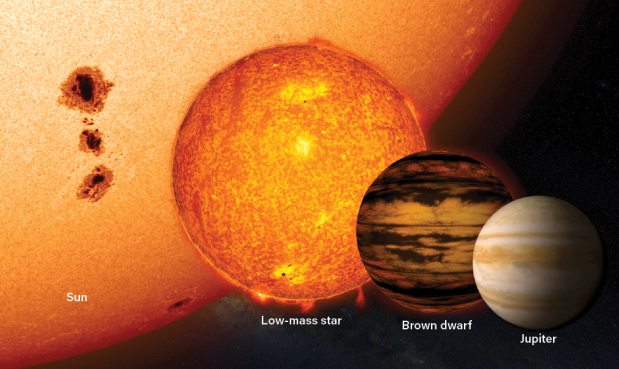What distinguishes Jupiter from being classified as a star or a brown dwarf?
Jupiter, despite being 318 times more massive than Earth, would require 80 times more mass for its core to reach the necessary temperature for sustaining thermonuclear fusion. This process involves the conversion of four hydrogen atoms into helium, accompanied by the release of energy. It is through fusion that stars are able to emit light and heat.
Similarly, brown dwarfs lack the necessary mass to sustain fusion. These objects, often referred to as “failed stars,” are formed solely from interstellar gas. In contrast, planets are formed from the remnants of a disk composed of dust and gas that accumulates around a star during the process of matter accretion. It is currently uncertain whether these two categories, brown dwarfs and planets, can overlap.

James B. Kaler
University of Illinois at Urbana-Champaign
Furthermore, it should be noted that the International Astronomical Union currently designates the demarcation point between brown dwarfs and planets at 13 times the mass of Jupiter. This specific threshold represents the minimum mass necessary for the initiation of deuterium fusion, with deuterium being an isotope of hydrogen.
This article is republished from astronomy.com under a Creative Commons license. Read the original article.
Do not forget to share your opinion with us to provide you with the best posts !



0 Comments